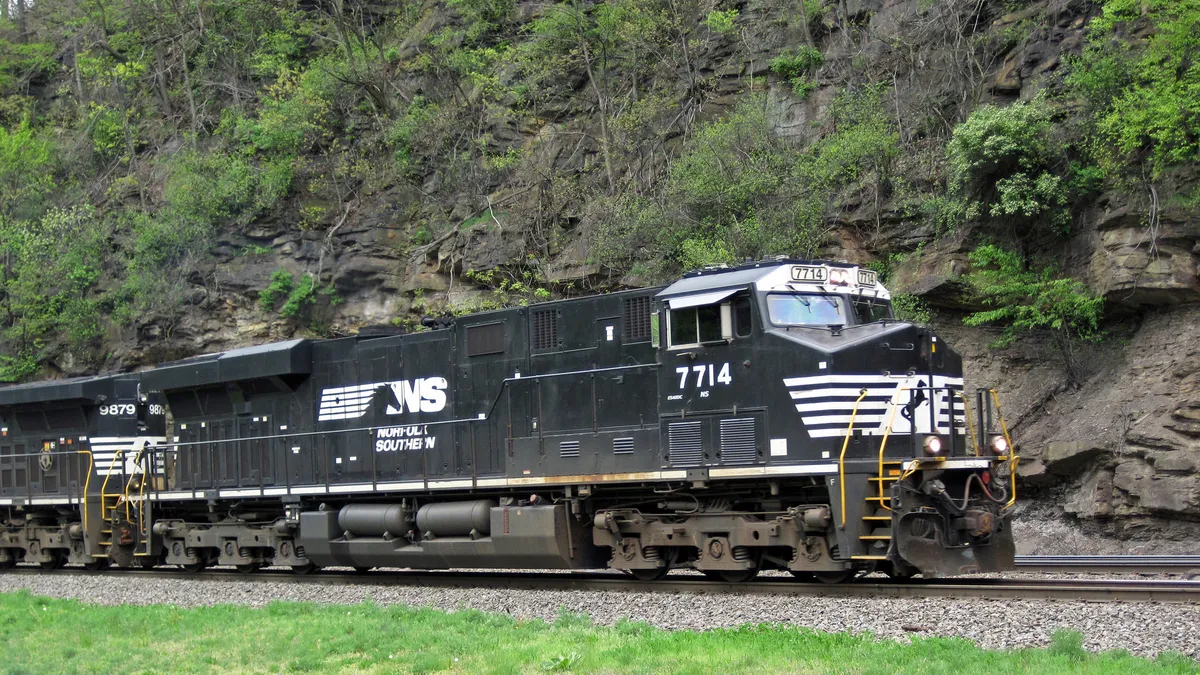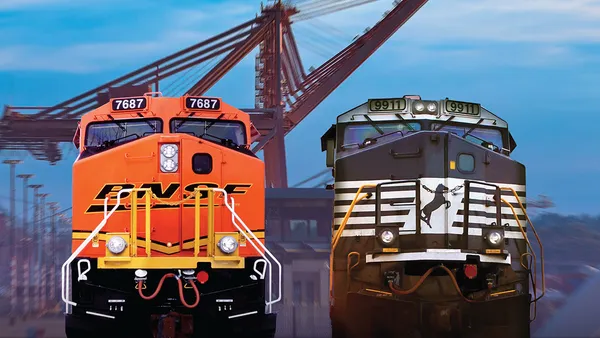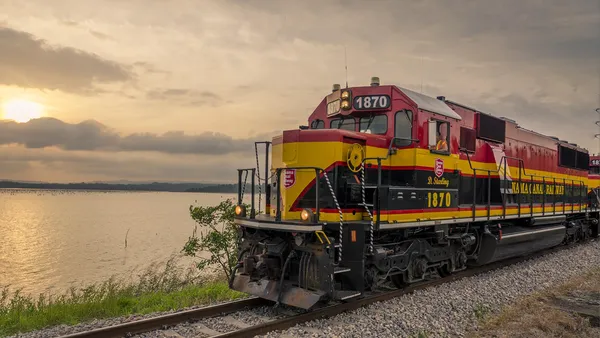Dive Brief:
- Intermodal and automotive were the two bright spots for Norfolk Southern in the most recent quarter with volumes growing at 1% YoY and 6% YoY, respectively, as overall volume fell 7% YoY, according to financial filings. The railroad said its intermodal volume is growing as a result of a tight trucking market and growing e-commerce sales in the United States, according to comments by executives on the company's Wednesday earnings call.
- "I think we're in a very unique truck environment," Norfolk Southern Chief Marketing Officer Alan Shaw told analysts. "What you've seen is that truck capacity is inelastic with demand. And so spot rates are at two, three year highs. Capacity is about as tight as it's been and we're in the midst of a prolonged inventory replenishment cycle."
- Norfolk Southern also referred to new product offerings as "truck competitive" or "truck-like" — a sign it is targeting those shippers for new intermodal business. It specifically highlighted its recent joint venture, Rail Pulse, that has the goal of furthering the use of telematics in the rail industry.
Dive Insight:
The comments by Norfolk Southern executives show that the railroad sees the tight trucking market as an opportunity for growth while still stressing the need to evolve to keep pace with the trucking market, which offers shippers more speed and visibility.
Earlier this month, Kansas City Southern showcased similar market trends and said it considers cross-border intermodal a potential growth area for its business. But it also noted making improvements to its trip plan compliance would be an important part in gaining that business.
"And as we stated earlier, the cross-border intermodal continues to be a very solid growth area," KCS CEO Pat Ottensmeyer said on the company's earnings call. "And that is certainly one area where service and trip plan compliance is more — much more — of a consideration in terms of growing given the premium service sensitivity of that business."
A lot of cross-border rail volume comes from the automotive industry, which operates on just-in-time manufacturing schedules that need inventory at expected and regular times.
Norfolk Southern's focus on telematics takes direct aim at one problem area for intermodal shipping: visibility.
"Telematics capabilities will include data capture to support real-time track-level visibility, whether doors or hatches are open, whether the car is loaded or partially loaded, and other key performance metrics," Norfolk Southern said in a recent press release about its Rail Pulse partnership. The release specifically notes sharing data with — and improving service for — shippers.
But the Rail Pulse platform won't be available until late 2022, and improving KCS' trip plan compliance won't happen overnight. Regardless, analysts see intermodal growth continuing over the course of the next year.
"We expect intermodal shipments will grow at a mid-single digit pace in the next 12 to 18 months, fueling the recovery in total freight growth," Moody's analysts wrote in a research note released Thursday.
As intermodal gains market share, though, it could become more expensive for shippers. One research note from UBS forecasts a 4% uptick in pricing at Norfolk Southern as a result of the tight trucking market.
The lack of capacity in the trucking market is not the only consideration driving strong intermodal volume for railroads right now. Ports across the country are seeing high levels of imports, and intermodal transport will move a lot of this volume inland.
Moody's analysts point out that the recent volume surge has been driven by consumer spending. But the future of this spending is uncertain with unemployment numbers still high and a second stimulus nowhere in sight.
"A possible weakening in consumer spending poses a risk to our projections for intermodal freight," Moody's wrote. "While improved from the trough in April and May at the height of the pandemic, consumer confidence remains low."













